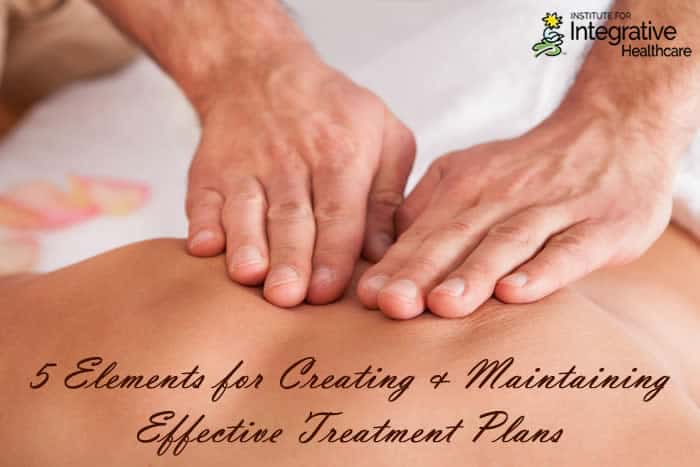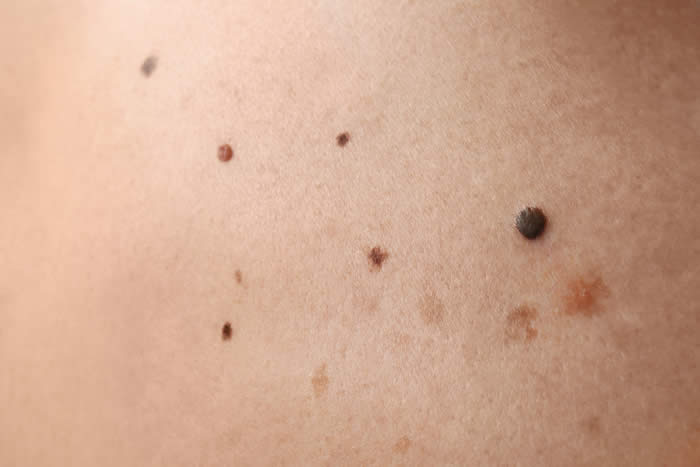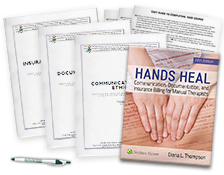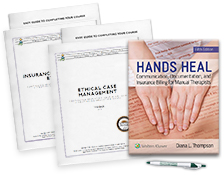

Effective treatment plans for clients can be a valuable tool to help a massage therapist assist clients through their healing journey. Often in our field, we need to express to clients the need for multiple sessions to alleviate a condition or chronic pain. Treatment plans provide the “game plan” to accomplish this goal.
This article will present 5 key elements to help a massage therapist think through the process of creating and implementing an effective treatment plan.
Why We Create Treatment Plans
One key reason to create treatment plans for clients is to keep track of progress over time. Clients need to see and feel results. Showing a client progress made over the course of several weeks to months will help clients recognize how well massage efforts are working.
Since insurance companies will not pay for sessions deemed unnecessary or ineffective, if a massage therapist wishes to bill insurance, it will be imperative to show progress over time with well documented session notes. A treatment plan provides an outline of expected and actualized results. As we create treatment plans, we can show an ability to measure success and modify treatments as necessary.
There are several means to aid in these efforts:
- Range of Motion (ROM) Assessments using a goniometer to measure range of motion
- Manual Muscle Testing (Resistance Tests) using a muscle strength grading scale (0-5)
- Orthopedic Assessment Tests to recreate pain patterns expressed
- Functional Tests which analyzing whether daily tasks facilitate pain
- Pain Scales (Wong-Baker Face pain scale, VAS Number scale, Oucher Pain scale)
- Condition specific measurement improvement: improved Fibromyalgia FIQ test scores; Reduction in A1C levels in Diabetic 5.7% or less, if above 6.4% Diabetes is a concern)
There are five essential elements to creating and maintaining effective treatment plans.
1. Initial Intake
There are two key components to the initial intake: verbal and non-verbal communication.
- A thorough verbal intake includes two types of questions. Closed-ended questions will inquire whether certain pathologies or medical conditions exist, either presently or within their medical history. Creating a list of conditions which a client indicates with a checkmark is an example of close-ended questioning. Open-ended questions will request a subjective answer to the inquiry. Asking to describe the nature of pain is an example of open-ended questioning.
- Nonverbal communication can reveal much about a client’s present general state of health. Does the client seem energetic or not? Can the therapist observe a chronic holding pattern when a client moves their body? Does their disposition indicate a positive or negative state of health? Is their emotional state being reflected within the physical state of the body?
2. Assessment
- Visual: A massage therapist may observe skin lesions, discoloration, pallor, swelling, nodules within the skin, and/or moles. When observing moles, remember to look for the “ABCDE” features to detect malignancies.

A = Asymmetry. A mole which looks uneven from one side to another demands a check.
B = Border. A mole with an irregular, unclean border demands a check.
C = Color. A mole with multiple colors demands a check.
D = Diameter. A mole bigger than a typical pencil erasure demands a check.
E = Evolving. A mole is changing in the above-mentioned features and may also elevate above skin surface.
- Postural (lines of alignment): There are three anatomical planes in which to ascertain postural alignment.
- The sagittal plane divides the body from left to right.
- The coronal plane divides the body along a lateral view from anterior to posterior.
- The horizontal plane divides the body into superior and inferior portions.
- Palpation: Touching bony landmarks and muscles for the purpose of re-creating pain, tenderness or similar sensations is a powerful assessment tool. If pain is felt, a therapist can ask if said pain radiates to a distant site or remains local. This can determine if either trigger points or tender points are experienced by the client. Also, pain or tenderness felt at bony attachment sites may indicate tendon strain injuries, whereas similar sensations felt within a muscle belly may indicate trauma to a muscle itself.
3. Create Goals
- Functional goals are related to an activity or movement pattern. An athlete may want improved performance within their sport. A “weekend warrior” may want to compete in a marathon. Someone may want to lift their children, prepare dinner or make their bed without pain. All of these examples relate to movement patterns in their lives.
- Objective goals are measurable and specific. These may pertain to blood markers measured in tests. A diabetic patient’s A1C levels dropping below 5.7% or a thyroid patients’ thyroid hormone levels brought to 3-8 for T3 and 4-11 for T4 are examples of these markers. Additionally, range of motion can also be measured with a goniometer for improvements witnessed after massage efforts.
4. Keeping Track of Progress
• SOAP Notes

The ability to write effective SOAP notes (and similar notes) will allow the practitioner to effectively track client progress. This allows the therapist to modify treatments as necessary.
It is wise to plan “by when” checks on progress. For example, “by the fifth session, we want to see 50% improvement in shoulder range of motion.” If the goal by check-in is met, the treatment plan is working effectively. If not, the therapist can modify the treatment.
Some of the ways to modify treatments include time devoted to each session, timing between sessions, intensity of pressure, modalities offered, and cadence of the work during session.
One important aspect in tracking progress is to match modalities to session goals. This lends to a therapist understanding the “why” they choose a certain technique or modality. Review the intention and benefits of a modality and its techniques to ascertain if a chosen modality is a “best fit” for the client.
5. Making New Goals
- Do not allow a client to plateau with progress. Keep supporting their bodies to reach a new functional goal. We can do this by increasing the intensity of massage sessions. This could mean more time upon the table, deeper pressure application and/or increased movement upon the table with stretching and range of motion.
- An analogy to help a client understand this concept is the gym workout analogy. Just as with working out, the body plateaus if one only lifts the same weight load with same reps. Only way to move past the plateau is to increase the weight load and/or number of reps.














